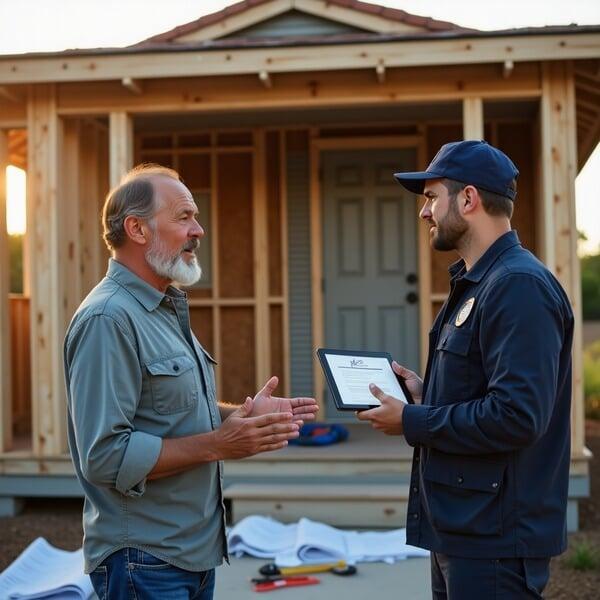In a decisive move to alleviate California's housing crisis, Governor Gavin Newsom has signed into law three pivotal bills aimed at transforming the landscape of Accessory Dwelling Units (ADUs). These legislative actions are set to streamline the ADU permitting process, enhance affordability, and provide homeowners and developers with the tools needed to contribute to the state's housing goals.

Understanding the Significance of ADUs in California's Housing Strategy
Accessory Dwelling Units, commonly known as ADUs, are secondary housing units located on the same lot as a primary residence. These units, which include granny flats, in-law units, and backyard cottages, have emerged as a practical solution to California's housing affordability crisis. They provide homeowners with opportunities to generate rental income, accommodate multigenerational families, and contribute to the state's housing stock without the need for large-scale developments.
The state's commitment to promoting ADUs is evident in the legislative measures signed by Governor Newsom. These laws aim to eliminate bureaucratic hurdles, reduce costs, and encourage the construction of ADUs across California.
The Three Landmark Bills Signed by Governor Newsom
1. AB 2533 – Legalizing Unpermitted ADUs and JADUs
Authored by Assemblymember Reggie Jones-Sawyer, AB 2533 addresses the issue of unpermitted ADUs and Junior Accessory Dwelling Units (JADUs). Prior to this legislation, homeowners who constructed ADUs or JADUs without proper permits faced challenges in legalizing these units. AB 2533 extends the deadline for legalizing such units from January 1, 2018, to January 1, 2020, and mandates that local agencies approve legalization applications unless there are significant health and safety concerns. This bill also introduces new public notification requirements and mandates pre-application inspections by private contractors, ensuring transparency and compliance with safety standards.
2. SB 1211 – Expanding ADU Opportunities on Multifamily Properties
Senate Bill 1211, introduced by Senator Nancy Skinner, significantly increases the number of detached ADUs allowed on multifamily properties. Previously, properties with existing multifamily dwellings were permitted to have up to two detached ADUs. SB 1211 expands this to allow up to eight detached ADUs or as many detached ADUs as there are primary dwelling units on the lot, whichever is less. This expansion provides greater flexibility for property owners and developers to create additional housing units, thereby contributing to the alleviation of California's housing shortage.
3. SB 1077 – Clarifying ADU Permitting in Coastal Zones
Senate Bill 1077, authored by Senator John Laird, addresses the complexities of ADU development in California's coastal zones. The bill requires the California Coastal Commission and the Department of Housing and Community Development (HCD) to develop guidance for local governments to facilitate the preparation of amendments to local coastal programs. This initiative aims to clarify and simplify the permitting process for ADUs and JADUs within the Coastal Zone, ensuring that coastal regulations are harmonized with the state's housing goals.
Implications for Homeowners and Developers
The enactment of these bills presents several advantages for homeowners and developers:
Increased Housing Options: The expanded allowances for ADUs, particularly on multifamily properties, open up new avenues for creating additional housing units, thereby increasing the overall housing supply.
Streamlined Permitting Process: The legalization of previously unpermitted units and the development of clear guidelines for coastal areas simplify the approval process, reducing delays and uncertainties.
Enhanced Affordability: By facilitating the construction of ADUs, these laws contribute to the availability of more affordable housing options, addressing the needs of low and moderate-income families.
Economic Benefits: Homeowners can benefit from rental income generated by ADUs, which can assist in covering mortgage payments and other expenses.
Navigating the ADU Permit Process in California
Building an ADU in California involves several steps, including obtaining the necessary permits. Understanding how to get an ADU permit in California is crucial for homeowners and developers. The process typically includes:
Determining Zoning Compliance: Ensure that the property is zoned to allow ADU construction.
Designing the ADU: Work with architects and designers to create plans that comply with local building codes and regulations.
Submitting Permit Applications: Submit the necessary applications to local planning departments.
Inspections and Approvals: Undergo required inspections and obtain approvals at various stages of construction.
Given the complexities involved, many homeowners and developers seek assistance from professionals. Engaging with top ADU permit companies in California can provide valuable guidance and ensure compliance with all regulations.
Top ADU Permit Companies in California
To facilitate the ADU construction process, several reputable companies specialize in obtaining ADU permits in California. These companies offer services ranging from design and planning to permit acquisition and project management. Collaborating with experienced professionals can streamline the process and help avoid potential pitfalls.

